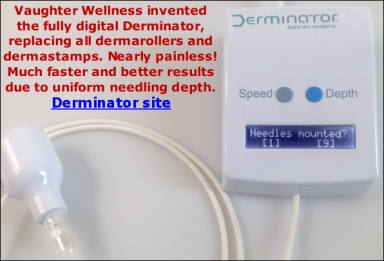When stitches have been removed, follow the instructions of your surgeon for the "scar management". It usually involves pressure massage. Every day you'll apply pressure with your fingers onto the scar for approx. 20 seconds, spot by spot. A scar typically has reduced blood circulation and applying pressure will expel deoxygenated blood, allowing fresh oxygenated blood to flow in. This pressure will thus mechanically prevent the formation of a hypertrophic/raised scar.
Sometimes the special elastic bra that is worn after surgery is designed such that it applies pressure onto the scar.
The scar will improve significantly during the months after surgery. The dermis will heal in about six to eight weeks and then it can take up to two years for the scar to fully mature.
The most targeted way to treat surgical scars is single needling.You should wait eight weeks after the surgery. Start gently!
Your surgeon may use a vascular laser to help reduce the redness of the scar.
The redness of the scar is caused by inflammation and dilated blood vessels.
If you want to speed up the reduction of the redness, you can try applying anti-inflammatory creams.
You have to ask a pharmacy for nonsteroidal anti-inflammatory cream or gel.Those are normally used for arthritis. Anti-inflammatories are for example Diclofenac, Ibuprofen, Aspirin (notParacetamol). Or buy NUROFEN rapid capsules or NAPROXEN capsules and pierce them. They both contain a nonsteroidal anti-inflammatory subtance.
You can also try diluted Tee Tree Oil but just like other essential etheric oils, it can irritate the skin in some individuals, especially if not diluted. It is an antibacterial and anti-inflammatory.
Redness makes the scar very visible but on the other hand, if there is still a lot of blood in the scar, it means the scar is still "active" and there is more likelihood that needling will slightly shrink its size. (Needling will actually make the scar temporarily more red but this will subside).





